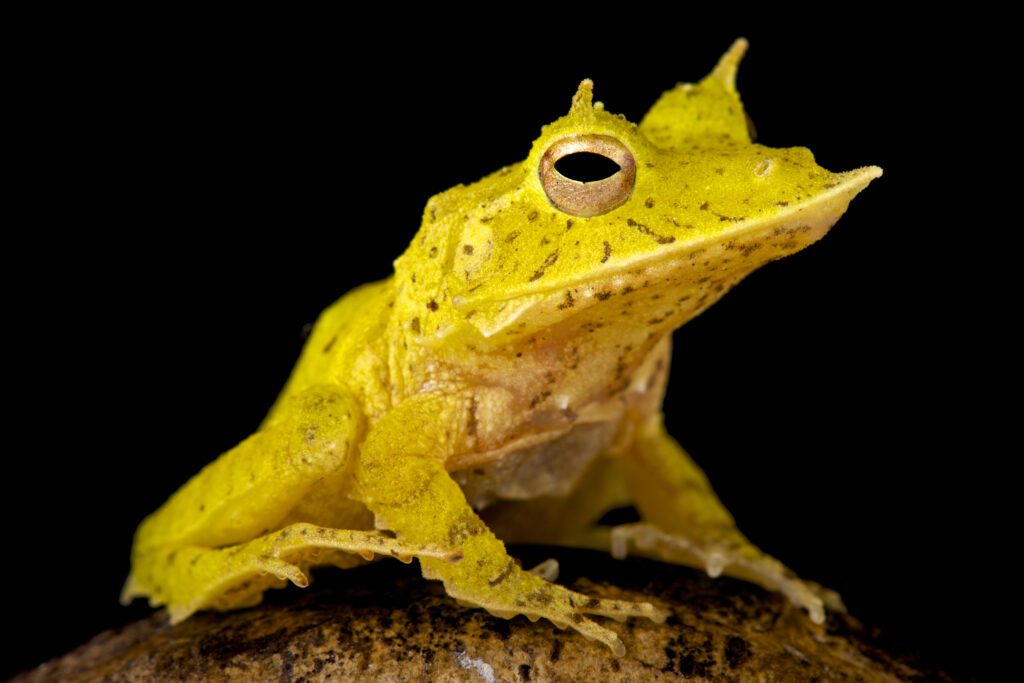The Solomon Island leaf frog (Ceratobatrachus guentheri), or “SILF” as it is sometimes referred to, is an extremely unique amphibian that is poorly established in the hobby. This is more likely due to the limitations of exporting animals from their home range in Papua New Guinea than because of their particularly complex captive requirements.
Soloman Island leaf frogs are extremely variable in colouration. Even amongst siblings, colours can vary from shades of bright green to dark browns and yellows. Unlike other “leaf” and “horned” frogs, colour is typically uniform with no patterns.

Solomon Island Leaf Frog (Ceratobatrachus guentheri) Husbandry
These frogs can be housed comfortably in small groups from young. However, group dynamics may change as they age, so housing proven pairs together is a more suitable option. Solomon Island leaf frogs mature quickly, and young males will begin calling (very loudly) as young as 4 months of age. Until this point, sexing the frogs is difficult at best.
Solomon Island leaf frogs inhabit lowland rainforests and secondary habitats on the Solomon Islands and Bougainville and Buka Island, off the coast of Papua New Guinea. Therefore, careful consideration and research should be put into sourcing captive-bred frogs. It is thought the initial Ceratobatrachus guentheri bred by private keepers came from zoo stock. However, supplementary imports may have occurred over the years. Luckily, there are numerous breeders across Europe and the US who are producing good numbers of captive-bred animals for the trade.
These frogs prefer warm temperatures (23 – 25℃) but will tolerate a slightly broader range, especially if they are given access to cooler areas. Unsurprisingly, these animals feel most comfortable amongst dense leaf litter. This should be sprayed frequently to maintain a consistent humidity of over 65%. Low-level UVB (Ferguson Zone 1) should also be provided to create a day/night cycle. Although these frogs are nocturnal, they will bury into leaf litter and expose their fleshy horns during the day, so appropriate UV fluctuations are necessary for their ecological and physiological cues.
Some “lines” are reported to have particular sensitivity to high bacterial loads, so a well-established bioactive setup may help ease the burden of excessive cleaning. Otherwise, a well-maintained glass terrarium (60x45x30 for a pair) with plenty of substrate that is changed every other week, will create an ideal environment. Logs, hides and a shallow water bowl are all welcomed additions.
Click here to explain the natural history and husbandry of another unique frog- mossy frogs.
